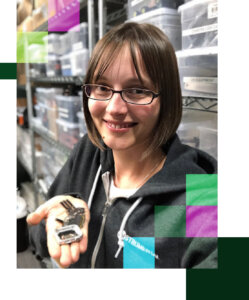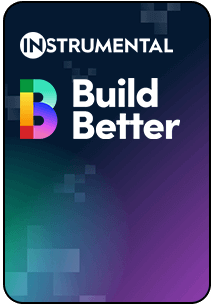-
NPI: A How To Guide for Engineers & Their Leaders
-
Leading from the Front
-
Building the Team
-
Screws & Glue: Getting Stuff Done
-
Choosing the best CAD software for product design
-
Screws vs Glues in Design, Assembly, & Repair
-
Best Practices for Glue in Electronics
-
A Practical Guide to Magnets
-
Inspection 101: Measurements
-
A Primer on Color Matching
-
OK2Fly Checklists
-
Developing Your Reliability Test Suite
-
Guide to DOEs (Design of Experiments)
-
Ten Chinese phrases for your next build
-
-
NPI Processes & Workflows
-
-
Production: A Primer for Operations, Quality, & Their Leaders
-
Behind the Pins: How We Built a Smarter Way to Inspect Connectors
-
Former Apple Executive Bryan Roos on Leading Teams in China and Managing Up
-
Leading for Scale
-
Navigating Factory Moves and Scaling Production in an Era of Uncertainty with PRG's Wayne Miller
-
Steven Nickel on How Google Designs for Repair
-
Petcube’s Alex Neskin Embraces Imperfection to Deliver Innovation
-
Proven Strategies for Collaborating with Contract Manufacturers
-
Greg Reichow’s Manufacturing Process Performance Quadrants
-
8D Problem Solving: Sam Bowen Describes the Power of Stopping
-
Cut Costs by Getting Your Engineers in the Field
-
Garrett Bastable on Building Your Own Factory
-
Oracle Supply Chain Leader Mitigates Risk with Better Relationships
-
Brendan Green on Working with Manufacturers
-
Surviving Disaster: A Lesson in Quality from Marcy Alstott
-
-
Ship It!
-
Production Processes & Workflows
-
-
Thinking Ahead: How to Evaluate New Technologies
-
How to Buy Software (for Hardware Leaders who Usually Don’t)
-
Adopting AI in the Aerospace and Defense Electronics Space
-
Build vs Buy: A Guide to Implementing Smart Manufacturing Technology
-
Leonel Leal on How Engineers Should Frame a Business Case for Innovation
-
Saw through the Buzzwords
-
Managed Cloud vs Self-Hosted Cloud vs On-Premises for Manufacturing Data
-
AOI, Smart AOI, & Beyond: Keyence vs Cognex vs Instrumentalpopular
-
Visual Inspection AI: AWS Lookout, Landing AI, & Instrumental
-
Manual Inspection vs. AI Inspection with Instrumentalpopular
-
Electronics Assembly Automation Tipping Points
-
CTO of ASUS: Systems Integrators for Manufacturing Automation Don't Scale
-
-
ROI-Driven Business Cases & Realized Value
-
-
Webinars and Live Event Recordings
-
Get Me Outta Here! Racing to Full Production Somewhere Else
-
Tariff Talk for Electronics Brands: Policies Reactions, Reciprocal Tariffs, and more.
-
Materials Planning: The Hidden Challenges of Factory Transitions
-
Build Better 2024 Sessions On Demand
-
Superpowers for Engineers: Leveraging AI to Accelerate NPI | Build Better 2024
-
The Motorola Way, the Apple Way, and the Next Way | Build Better 2024
-
The Future of Functional Test: Fast, Scalable, Simple | Build Better 2024
-
Build Better 2024 Keynote | The Next Way
-
Principles for a Modern Manufacturing Technology Stack for Defense | Build Better 2024
-
What's Next for America's Critical Supply Chains | Build Better 2024
-
Innovating in Refurbishment, Repair, and Remanufacturing | Build Better 2024
-
Leading from the Front: The Missing Chapter for Hardware Executives | Build Better 2024
-
The Next Way for Reducing NPI Cycles | Build Better 2024
-
-
The State of Hardware 2025: 1,000 Engineers on Trends, Challenges, and Toolsets | Build Better 2024
-
Build Better Fireside Chats
-
Aerospace and Defense: Headwinds & Tailwinds for Electronics Manufacturing in 2025
-
From Counterfeits to Sanctions: Securing Your Supply Chain in an Era of Conflict
-
Design for Instrumental - Simple Design Ideas for Engineers to Get the Most from AI in NPI
-
Webinar | Shining Light on the Shadow Factory
-
Tactics in Failure Analysis : A fireside chat with Dr. Steven Murray
-
-
Preparing for Tariffs in 2025: Resources for Electronics Manufacturers
-
Welcome to the Build Better Handbook – a work in progress documenting all I’ve learned from the leaders I admire, my own experiences, and my observations about developing and producing world-class electronics products from seeing over 100 NPIs. Let’s start from the beginning.

Sam and I at our Build Better 2024 Manufacturing Summit with our team after playing manufacturing "Family Feud".
When Samuel Weiss and I founded Instrumental in 2015, we were fresh off of delivering the first Apple Watch to the market and bright-eyed and bushy-tailed on our mission to eliminate the massive inefficiencies we'd witnessed in electronics manufacturing. We had a little professional credibility, a bold idea, and a small amount of funding. While we envisioned a more efficient future for manufacturing powered by technology, our mission was more selfish: build the tools we thought we needed to build the best products. Many years later, while the vision and the goal are the same, our mission is broader: to empower engineering and operations teams who manufacture products to do their best work.
At the beginning, I thought the only barriers to building better products were technological. Back in 2015, there was very little on the internet about the lives of hardware engineers, our struggles, and how to excel at our jobs. When we asked engineers and leaders how they learned new best practices or about new technologies, it was generally from peers. So I started toward our mission by writing what I knew about building great electronic products and my vision for what technology, such as manufacturing analytics and automated optical inspection, could unlock. I wrote a simple piece of content in 2015 defining what EVT, DVT, and PVT meant, the first of such content on the internet at the time, and it was a hit. Leaders said they embedded it in their onboarding, training, and company wikis; we have the backlinks to prove it. It seemed like I’d landed on something interesting.
Technology can only improve business outcomes when the culture is aligned with improving business outcomes.
Years later, I have the unique vantage point of seeing inside nearly 100 companies executing over 100 NPI programs and millions of production units -- I realized the challenges aren’t just technical. While the particularities from company to company and program to program are different, the leaders and the cultures they nurture significantly impact product performance. Technology can only improve business outcomes when the culture is aligned with improving business outcomes.
Leaders in manufacturing have apprenticed in the school of hard knocks – it’s a role you learn on the ground, working up from the bottom of the organization. The constant barrage of crises hones their intuition over decades. Manufacturing leaders often operate in large, complex organizations that are siloed, fractured, and generally quite unique to that specific company. That makes writing general leadership guidance for manufacturing leaders nearly impossible.
But leaders want to learn, and they learn best from their peers. We've highlighted leaders with bold ideas on the best ways to lead teams, who think critically about their processes, and with frameworks on crisis response. I regularly speak to leaders who want to learn about everything I’ve seen in the 100s of organizations I've worked with. They want to understand how others are operating, how they stack up, and how they can improve their organization.
 That's the purpose of the Build Better Handbook: to provide a place for visionaries and leaders to learn from their peers, to get insights into their organizations and processes, and to provide opportunities to shift their organizational culture towards improved product performance and business outcomes. While Instrumental has roots in consumer electronics, we’ve broadened our focus to include electronics manufacturing across the volume, quality, and regulatory spectrum. We’ve divided the content by product lifecycle stage, each with sub-chapters on leadership lessons and tactics and “screws and glue” content from our archives for daily operators.
That's the purpose of the Build Better Handbook: to provide a place for visionaries and leaders to learn from their peers, to get insights into their organizations and processes, and to provide opportunities to shift their organizational culture towards improved product performance and business outcomes. While Instrumental has roots in consumer electronics, we’ve broadened our focus to include electronics manufacturing across the volume, quality, and regulatory spectrum. We’ve divided the content by product lifecycle stage, each with sub-chapters on leadership lessons and tactics and “screws and glue” content from our archives for daily operators.
We’ve also learned that many visionaries and leaders in engineering and operations struggle to bring new technologies into their organizations. We’ve learned a lot about how to successfully do that through the years – working with visionaries who were subsequently promoted or otherwise recognized within their organization – so the Handbook has a section dedicated to evaluating and adopting innovative products, whether Instrumental or something else.
We’re excited to work on this with you! Drop me a line if you have feedback or are interested in contributing your own school of hard knocks knowledge to the Handbook.
Anna-Katrina Shedletsky
Engineer | CEO and cofounder of Instrumental

